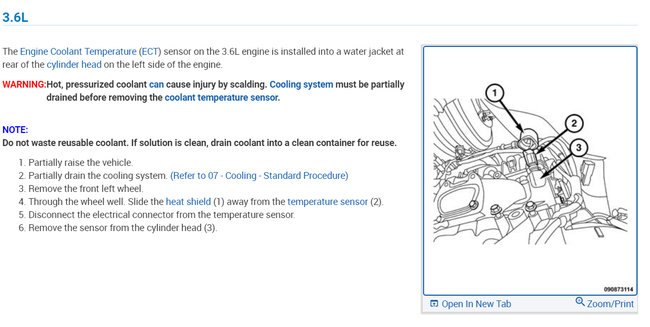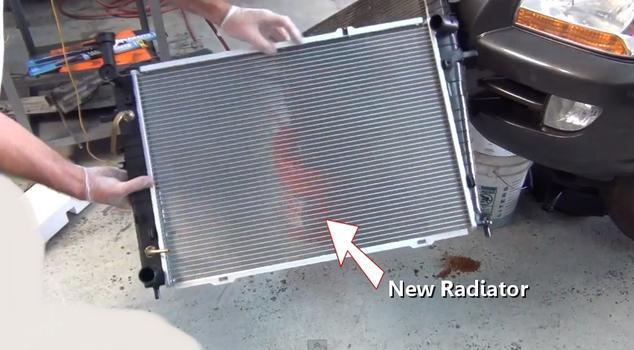Did you use an OEM thermostat? Also is the radiator the same size and thickness? Also, when it is running hot can you hear the clutch fan kick in?
Hear is the test you should do to see if the viscous fan clutch is bad:
Diagnosis And Testing - Radiator Viscous Fan
Noise
Note:
It is normal for fan noise to be louder (roaring) when:
The under-hood temperature is above the engagement point for the viscous drive coupling. This may occur when the ambient (outside air temperature) is very high.
Engine loads and temperatures are high such as when towing a trailer.
Cool silicone fluid within the fan drive unit is being redistributed back to its normal disengaged (warm) position. This can occur during the first 15 seconds to one minute after engine start-up on a cold engine.
LEAKS
Viscous fan drive operation is not affected by small oil stains near the drive bearing. If leakage appears excessive, replace the fan drive unit.
VISCOUS DRIVE
For the following test, the cooling system must be in good condition. It also will ensure against excessively high coolant temperature.
WARNING:
Be sure that there is adequate fan blade clearance before drilling.
Drill a 3.18-mm (1/8-in) diameter hole in the top center of the fan shroud.
Obtain a dial thermometer with an 8-inch stem (or equivalent). It should have a range of -18°-to-105°C (0°-to-220° F). Insert thermometer through the hole in the shroud. Be sure that there is adequate clearance from the fan blades.
Connect a tachometer and an engine ignition timing light. The timing light is to be used as a strobe light.
Block the air flow through the radiator. Secure a sheet of plastic in front of the radiator. Use tape at the top to secure the plastic and be sure that the air flow is blocked.
Be sure that the air conditioner (if equipped) and blower fan is turned off.
WARNING:
Use extreme caution when the engine is operating. Do not stand in a direct line with the fan. Do not put your hands near the pulleys, belts or fan. Do not wear loose clothing.
Start the engine and operate at 2400 rpm. Within ten minutes the air temperature (indicated on the dial thermometer) should be up to 88° C (190° F). Fan drive engagement should start to occur at/between:
5.7L Automatic Standard Cool - 94° C - 99°C (201° F - 211° F)
5.7L Manual - 93° C - 100°C (199° F - 212° F)
5.7L Heavy Duty Snowplow - 76° C - 83°C (169° F - 181° F)
Engagement is distinguishable by a definite increase in fan flow noise (roaring). The timing light also will indicate an increase in the speed of the fan.
When viscous drive engagement is verified, remove the plastic sheet. Fan drive disengagement should start to occur at or between:
5.7L Automatic Standard Cool - 69° C - 74°C (156° F - 166° F)
5.7L Manual - 71° C - 76°C (160° F - 170° F)
5.7L Heavy Duty Snowplow - 55° C - 60°C (168° F - 178° F)
A definite decrease of fan flow noise (roaring) should be noticed. If not, replace the defective viscous fan drive unit.
CAUTION:
Some engines equipped with serpentine drive belts have reverse rotating fans and viscous fan drives. Installation of the wrong fan or viscous fan drive can result in engine overheating.
CAUTION:
If the viscous fan drive is replaced because of mechanical damage, the cooling fan blades should also be inspected. Inspect for fatigue cracks, loose blades, or loose rivets that could have resulted from excessive vibration. Replace fan blade assembly if any of these conditions are found. Also inspect water pump bearing and shaft assembly for any related damage due to a viscous fan drive malfunction.
This guide can help as well
https://www.2carpros.com/articles/engine-overheating-or-running-hot
Please run down this guide and report back. Let us know what happens and please upload pictures or videos of the problem.
Saturday, June 25th, 2022 AT 11:54 AM





